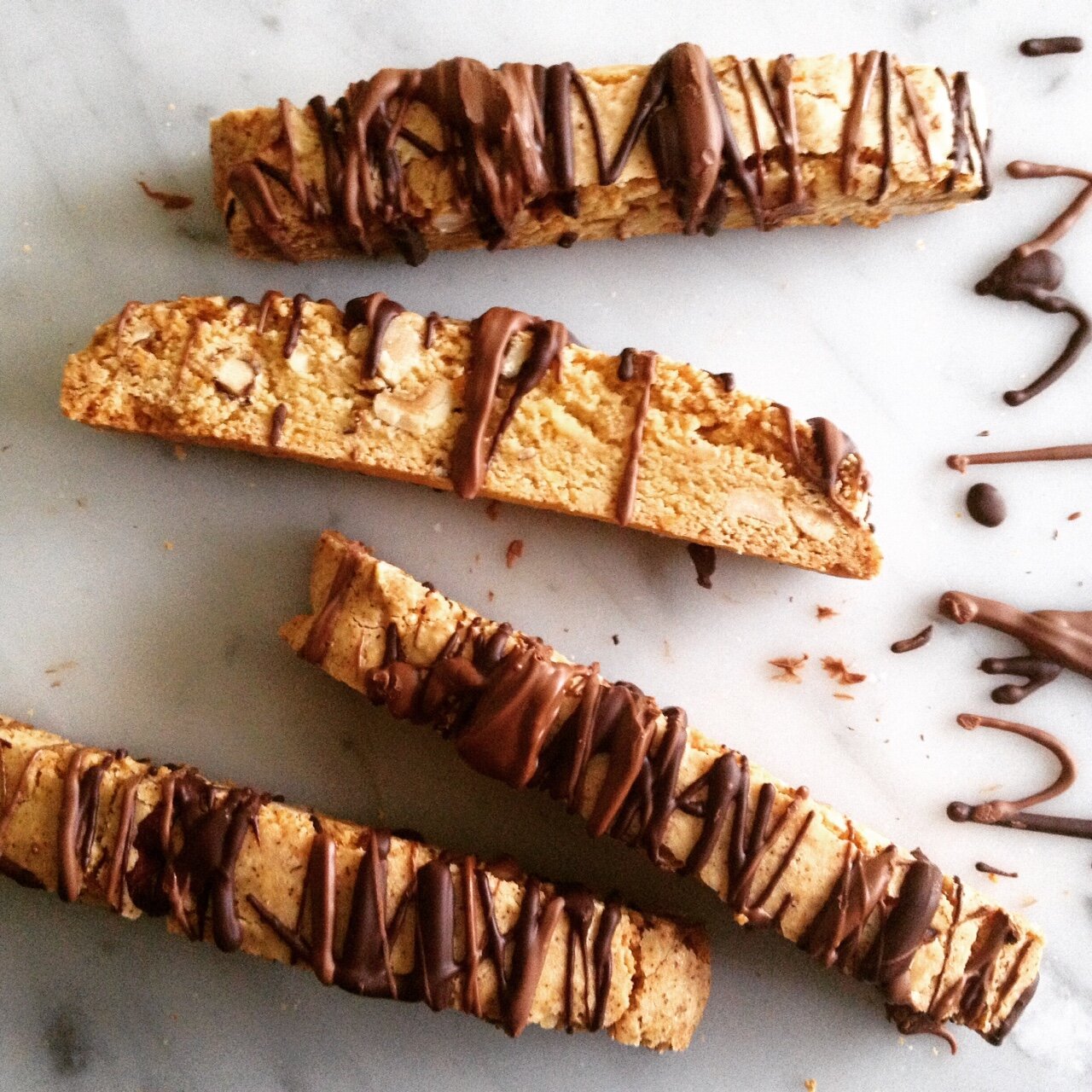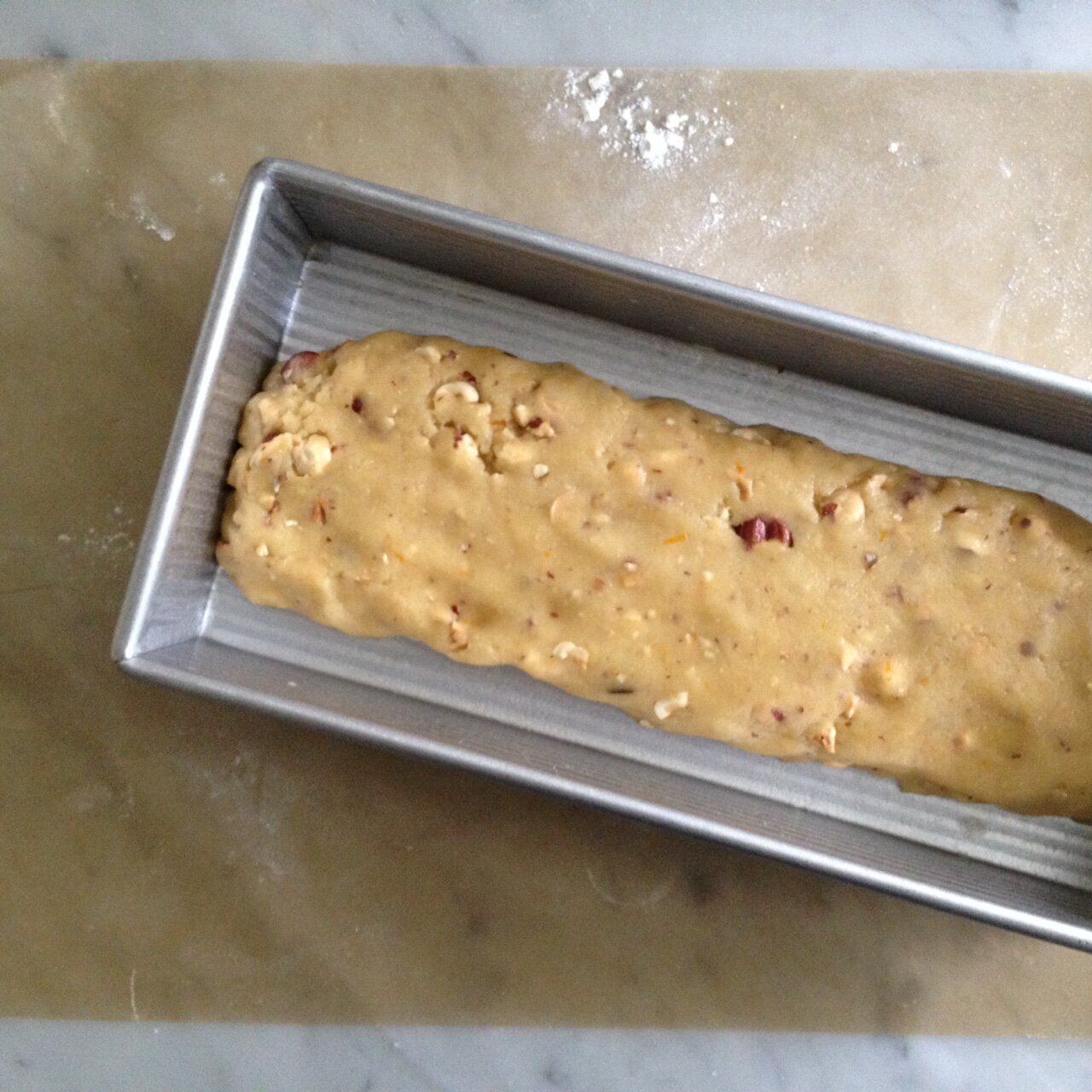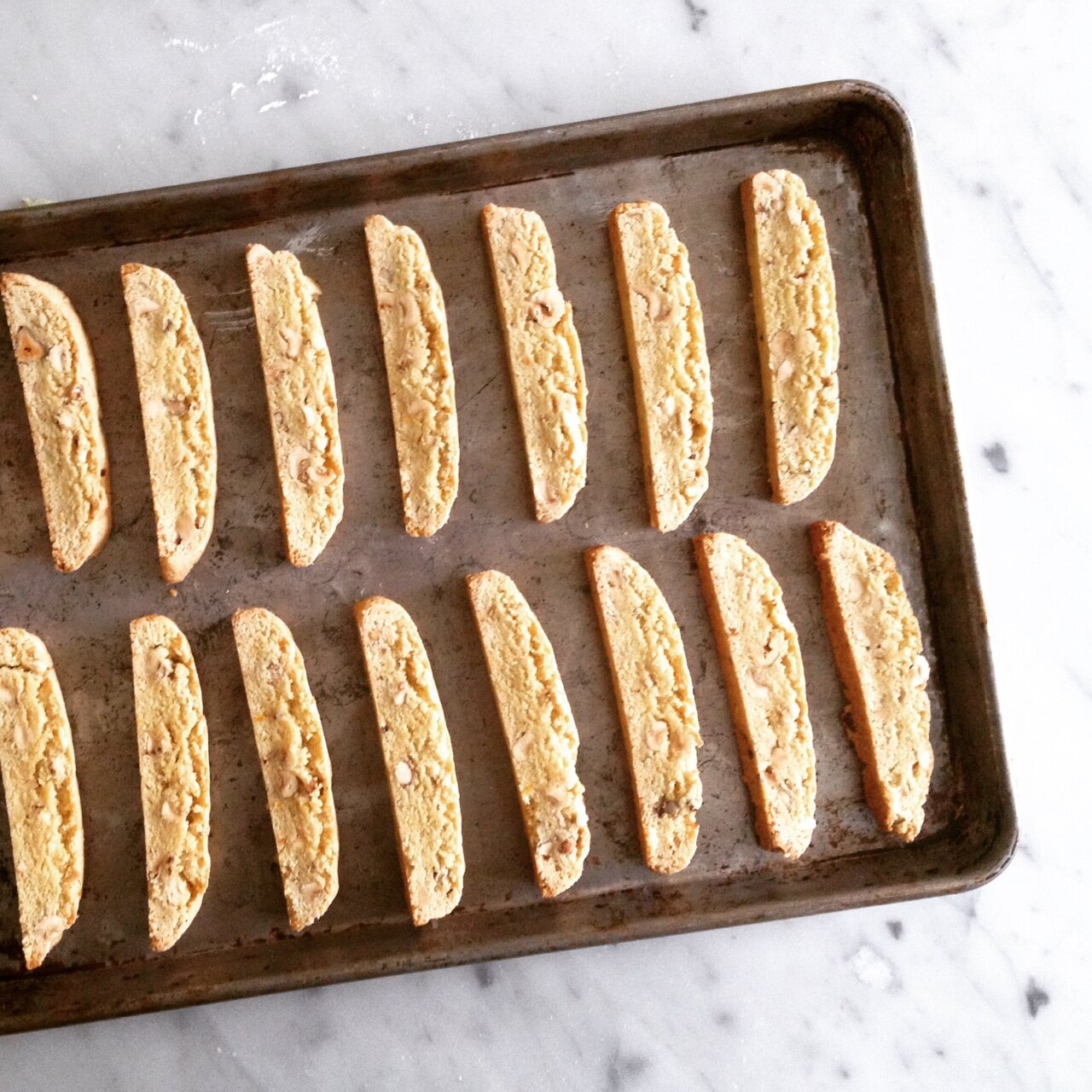Coffee House Biscotti
Apparently I wrote an entire book about biscotti without ever knowing that there is something in the world called a biscotti pan.
Are you familiar with it? It's essentially a long, shallow loaf pan that produces the kind of biscotti ~ fat and as long as a baton ~ that you find in coffee houses the world over. The fine folks at Fante's Kitchen Shop, in Philadelphia, brought the pans (there are two sizes) to my attention as we were planning aCiao Biscotti book signing.
Traditional biscotti are mixed and shaped by hand. You start with a mound of flour and incorporate "wet" ingredients into a well in the center of the mound ~ as though you were making pasta. In testing recipes for the book, I opted for the convenience of a stand mixer. It makes quick work of mixing and also breaks up the nuts just a bit.
I shape the loaves by hand, patting them into shape on a baking sheet. The dough is sticky but it's not a difficult process. You can tailor the size of your biscotti by making the loaves larger and smaller, and by cutting them into thin or thick slices (I prefer smaller ones for dipping in wine and larger ones for dunking in coffee).
Still, I was curious about these biscotti pans, so Fante's sent me a couple to try out. One is long and thin and the other is shorter and wider. The pans come with recipes, but I wanted to see whether a recipe from the book would work. I used the wider pan (5 1/2- by 12 inches) and my recipe for traditional hazelnut biscotti. Instead of shaping the dough into two loaves, I pressed all of it into the pan (see above). Here's what it looked like after baking.
I let the loaf cool and then cut it into thick (3/4-inch) slices, which I baked cut-side-up on a rimmed baking sheet. Since I was going for over-the-top coffee house biscotti, I decided to drizzle the twice-baked slices generously with both bittersweet chocolate and milk chocolate. Voilà ~ hazelnut coffee house biscotti, crunchy, chocolatey, perfumed with a little orange zest, and perfect for dunking in your Triple Grande Big Gulp Latte, or even your regular morning coffee.
COFFEE HOUSE BISCOTTI
Makes 16 large biscotti
Ingredients
1 tablespoon vegetable oil
2 cups unbleached all-purpose flour
1 cup sugar
1/2 teaspoon baking powder
1/4 teaspoon fine sea salt
Finely grated zest of 1 small orange
3/4 cup toasted, skinned hazelnuts (you can by them already toasted and skinned at Trader Joe's)
2 large eggs, lightly beaten (see Notes)
2 to 3 tablespoons hazelnut oil (use sunflower or olive oil as a substitute)
1 teaspoon pure vanilla extract
3 ounces bittersweet chocolate, melted (see Notes)
3 ounces milk chocolate, melted (see Notes)
Instructions
1. Heat the oven to 350° F. Lightly coat a 5 1/2- by 12-inch biscotti pan or a rimmed baking sheet with vegetable oil (or use parchment).
2. Combine the flour, sugar, baking powder, salt, and orange zest in the bowl of a stand mixer fitted with the paddle attachment. Add the hazelnuts and mix on low speed to combine and break up some of the nuts. Mix in the eggs, 2 tablespoons hazelnut oil, and vanilla extract and mix on medium speed until a soft, slightly sticky dough has formed. Drizzle in the remaining tablespoon of hazelnut oil if the dough seems dry or isn't coming together.
3. Scrape the dough into the biscotti pan, if using. Otherwise, scrape it onto the baking sheet. Use your hands and fingers to stretch and pat the dough into a loaf roughly 4 inches wide and 12 inches long. Press down on the loaf to flatten it out a bit and make the top even.
4. Bake the loaf for 30 to 35 minutes, or until it is lightly browned and just set ~ it should be springy to the touch and there should be cracks on the surface. Transfer the biscotti pan or baking sheet to a cooling rack and let cool 5 minutes. Gently slide an offset metal spatula under the loaf to loosen it from the pan and transfer the loaf to the rack to cool for 20 minutes. Lower the oven temperature to 300 degrees F.
5. Transfer the cooled loaf to a cutting board and, using a Santoku knife or a serrated bread knife, cut it crosswise into 3/4-inch-thick slices. Arrange the slices, cut-side up, on the baking sheet and bake for 15 minutes. Turn the slices over and bake for another 15 to 20 minutes, until lightly browned. Transfer the slices to the rack to cool completely.
6. Arrange the cooled slices upright on the rack and set it over a baking sheet lined with waxed paper or parchment. Dip a fork into the melted bittersweet chocolate and wave it back and forth over the biscotti to create drizzles, droplets and splotches. Do the same with the melted milk chocolate. Place the baking sheet in a cool spot (I put mine in the garage) or the fridge for 30 minutes to set the chocolate. Let the biscotti return to room temperature before serving.
7. The biscotti will keep for up to 10 days in an airtight container stored at room temperature.
NOTES The amount of egg necessary to bring the dough together will depend on how large the eggs are and other variables, including how much moisture is in the flour and in the atmosphere (air tends to be drier in winter). If necessary, beat one additional egg and add it in driblets, just as much as you need to achieve a sticky dough. Save any leftover egg, if you like, and brush it on top of the biscotti loaves before you bake them.
To melt chocolate, chop coarsely and put the pieces in the top of a double boiler set over (but not touching) barely simmering water. Or put the pieces in a heat-proof bowl over (but not touching) a pan of barely simmering water. Heat, stirring gently now and again, until the chocolate is melted and smooth. To melt in the microwave, put the pieces of chocolate in a microwave-safe bowl and zap at 50 percent power in 30-second intervals until melted and smooth. Stir after each interval.




